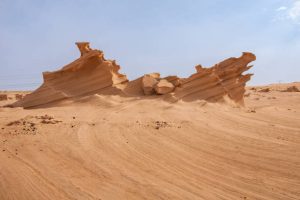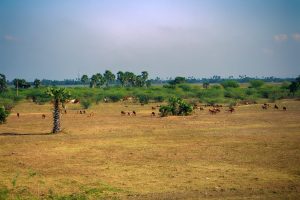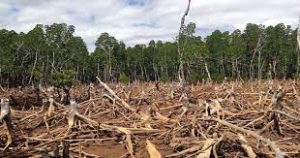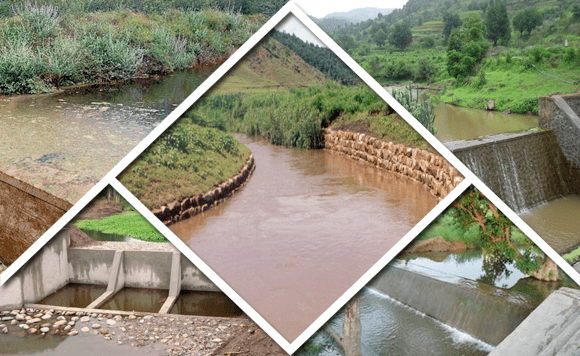- March 7, 2023
- By admin
- Soil Science
- (4) Comments Post Views : 4543
A QUICK LESSON ON SOIL EROSION AND CONSERVATION:
WHAT IS SOIL EROSION
It is a process in which the top fertile layer of soil is lost. Due to soil erosion, the soil becomes less fertile. The removal of topsoil by the natural forces is known as soil erosion.
IMPACT OF SOIL EROSION
Soil erosion destroys the most fertile section of the soil, which contains the majority of the nutrients and organic matter required by plants, leaving behind the less fertile subsoil.
As a result of the removal of seeds or seedlings, the soil becomes bare, making it more susceptible to erosion.
It also decreases the soil’s ability to hold water.
The Importance of Soil, Especially Topsoil
Insects and earthworms are among the species that dwell in soil. Soil acts as a reservoir for water and nutrients that plants require for growth. It also serves as a home for a variety of creatures that dwell on or in the soil.
CAUSES OF SOIL EROSION
Various agents, like wind, water, deforestation, overgrazing by cattle, etc., cause soil erosion. The major factors of soil erosion are.
1. SOIL EROSION BY THE WIND

When strong winds blow, the topsoil along with the organic matter is carried away by the wind.
Soil erosion caused by the wind is especially prevalent in locations where natural vegetation is scarce. It’s mainly found near the sandy coasts of seas, lakes, and rivers in dry and arid places. After becoming loose, the soil particles are blown and transported away by the wind through.
2. SOIL EROSION BY THE WATER

Water erosion can be caused by raindrops, waves, or ice. The severity and kind of soil erosion caused by water are classified differently.
When it rains in the hilly areas, the soil gets washed away towards the plains. The running water deposits the mineral-rich soil in the riverbed and over the years this deposition of soil can change the course of the river. This can lead to floods which cause the destruction of life and property. Water erosion leads to loss of agriculture potential.
3. Overgrazing

When cattle are allowed to graze on the same field repeatedly, all the available grass, including the roots are eaten by them. This makes the topsoil vulnerable to wind and flowing water, leading to soil erosion.
4. DEFORESTATION

Humans have taken land from the forest to cultivate in order to feed the ever-increasing population and to build houses, industries, etc. Cutting down trees on a large scale for these purposes is deforestation. The roots of trees hold the soil together, thus preventing the soil from getting uprooted. When large areas of the forest are cleared, the topsoil gets eroded by wind and flowing water.
SOIL CONSERVATION
Soil conservation refers to – proper land use, maintenance of soil fertility, conservation of cultivated land, rehabilitation of eroded land, and protection of land from all kinds of degradation. It is the use of land within limits of economic practicability according to its capabilities and its needs in order to keep it permanently productive. All the measures required to achieve permanent productivity of the soil constitute the tools of conservation whether used singly or in various combinations.
soil erosion can effect all of our lives and be dangerous to our health. Soil conservation is a very important process that we need to begin to look at.
1. Afforestation
Planting new trees and plants is afforestation. We live because plants live. If the plants die, all living things will also die. Thus, whenever trees are cut down new trees should be planted. Planting trees in hilly areas are most effective for conservation.
2. Crop rotation
Between harvesting one crop and planting the next crop, the fields lie bare; there is a time period when the farmland does not have any crops. During this period, the farmer either grows grass or grows other crops to prevent soil from erosion. This helps the soil to regain the lost minerals.
3. Terrace Farming
In hilly areas, farming is done by cutting steps on the slopes of the hills. This slows down the flow of water and soil removed from one step is deposited on the next step. Thus, the soil is never completely lost. This is terrace farming.
4. Building Dams
Dams are built to prevent floods, which not only damage the crops but also wash away the topsoil.
5. Shelterbelts
The cover of plants and trees around the field also breaks the speed of strong winds and protects the soil from being blown away.
6. Planting Tree
Trees have thick root systems that branch into fine filaments and create a network. This network of root systems help stabilize the soil around the tree and hold it in place.
Tree reduce soil erosion and provide habitat for pollinators. When planted along waterways as riparian buffers, they reduce run-off of nutrients and soil sediment in-stream.
Related posts:
No related posts.


4 Comments